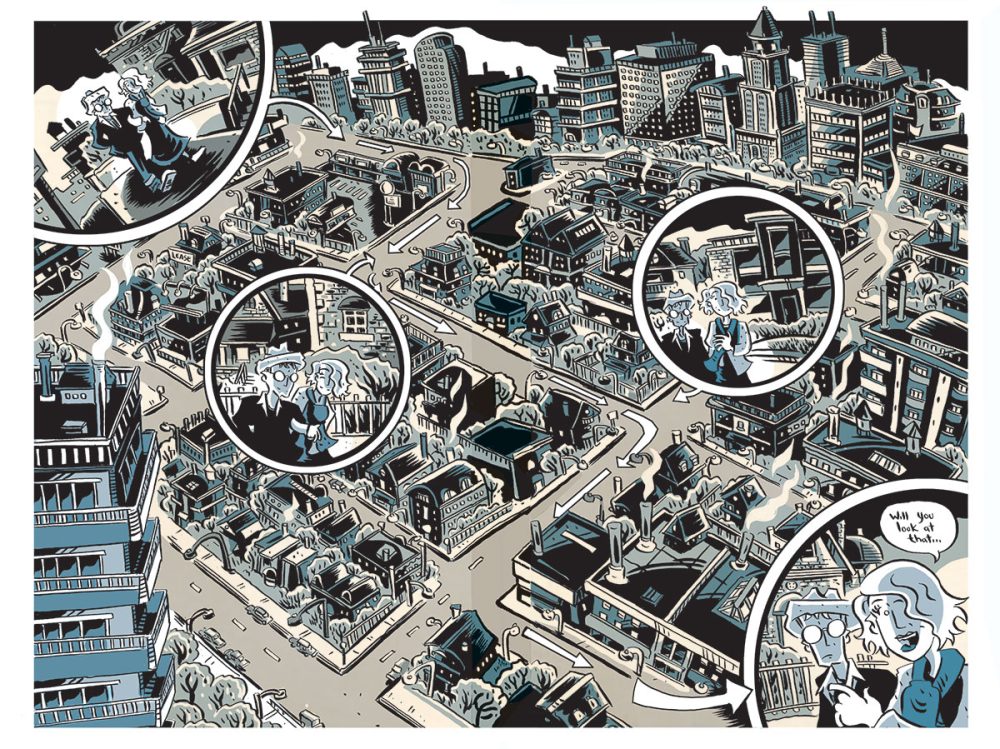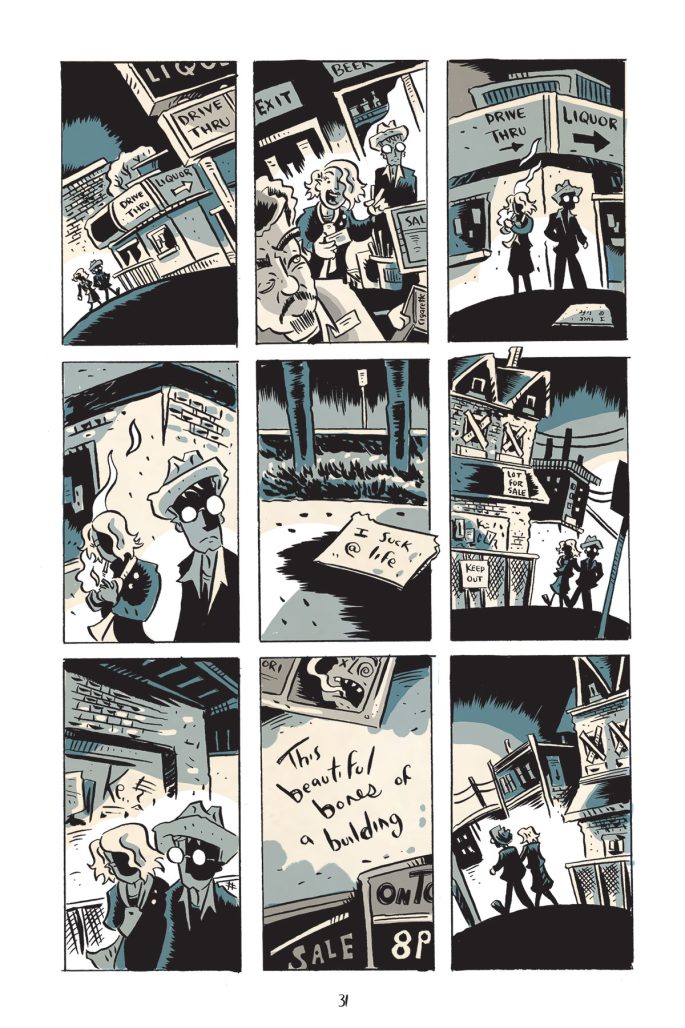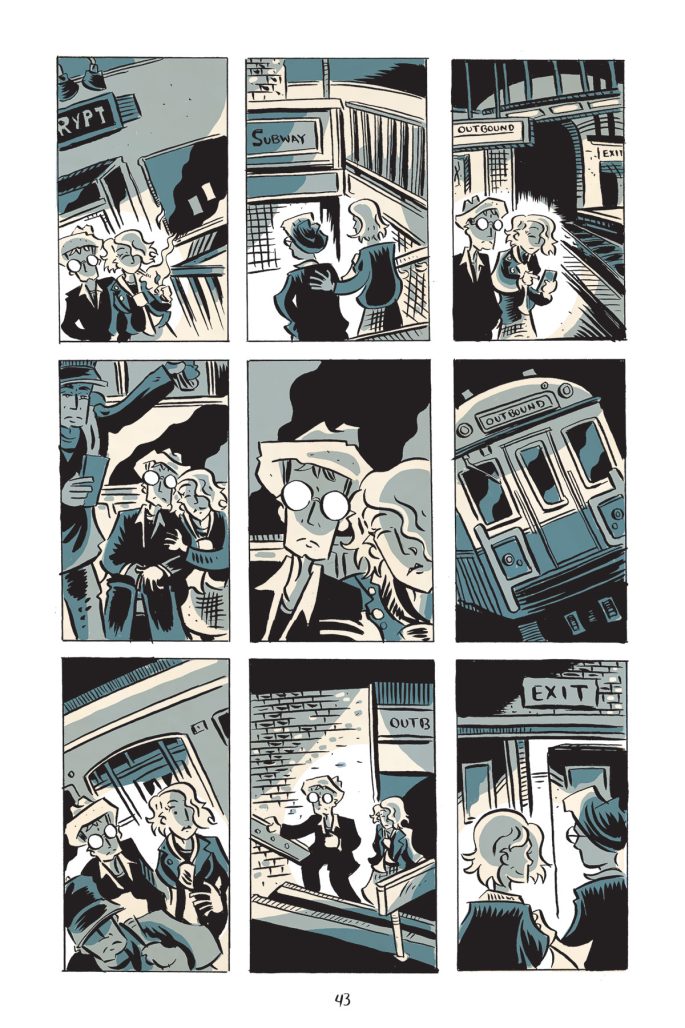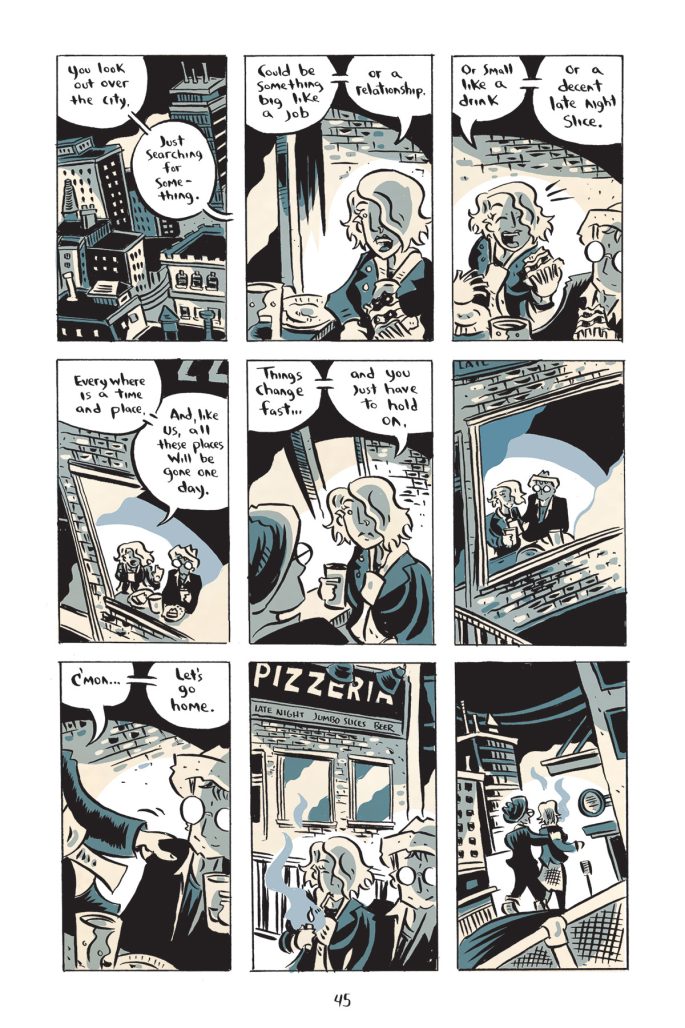In 2016, I road-tripped city-to-city across most of the United States. I had gotten sick of my job and sought a career change, finding uncertainty juxtaposed against the boundless possibilities of the open road. Thirty-two different states. Sixteen different cities. The only consistency known was in finding the heart of things to do along a new destination, something that artist Karl Christian Krumpholz knows well regarding what that feels like, having lived in more metropolises in his lifetime than your average person.
We got to speak at MoCCA regarding our shared love of our everyday cities as part of our artist’s spotlight. In this piece, Krumpholz talks about his experience traveling for conventions and what it’s like depicting the slice-of-life stories of city living with his wife Kelly in his latest series, IN THE CITY.
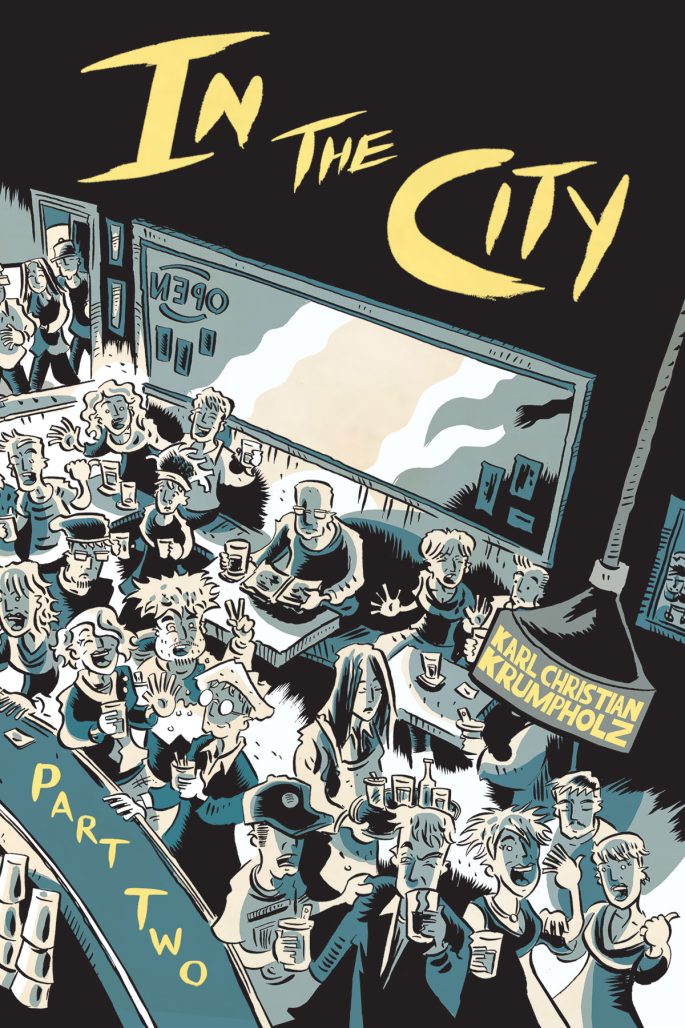
KARL CHRISTIAN KRUMPHOLZ: Back when I started doing comics in Philadelphia, the two indie shows that jumped out at me were SPX and MoCCA, since they were not that far away and pretty much in my backyard. However, years later I had moved to Colorado, so getting back East was a bit harder. It was only within the last few years that I’ve been successful enough with my comics that I have been able to do a lot more of the indie convention circuit, including MoCCA, which has quickly become one of my favorite shows; especially to see friends as well as some of the bars that I love in NYC. MoCCA has been a wild weekend and it’s always brilliant to see so many people coming by and wanting indie comics.
ANGELES: For anyone not familiar, can you tell us a bit about yourself and your latest project IN THE CITY?
KRUMPHOLZ: I’m a cartoonist originally from Philadelphia but have also lived in Boston for quite some time. To get around all this, I usually just say that “I’m from the East Coast.”
I’m now working out of Denver, CO; so I’ve moved around quite a bit. A lot of my previous work (30 MILES OF CRAZY!, QUEEN CITY, and THE LIGHTHOUSE IN THE CITY) have all pretty much centered around the ideas of life in the city, since… well, I have always lived in cities, so I write and draw what I see around me.
IN THE CITY is my latest project and is the most centered on the idea of exploring city life, which is experienced through the two main characters Kelly and Karl (based on my wife and I.) Since we live in such a small place, The City has kind of become our concrete living room. We walk its streets, moving from situation to situation, witnessing the small and grand along with all of the beauty and grimness of urban living. Its quiet moments interrupted by sudden excitement, passing through happy hours and interacting with the characters, deadbeats, street people, and barflies that make city life interesting. I wanted to do a comic that gave the feel of what it’s like to live in the city.
ANGELES: I love the scenic art style of IN THE CITY. The wider cityscapes. The movement in panels that tracks the liveliness of personalities. How much of this is based on real experiences and do you have any real-life stories of inspiration you can share?
KRUMPHOLZ: Actually, almost all of IN THE CITY is based on true experiences, things that have happened or I’ve witnessed in Denver, Boston, NYC, Philadelphia and other places that I’ve visited. This is one reason that I never really name “The City”, since it’s suppose to stand in for all city life. So, things that happen in the comic like the Bob Dylan story (which actually happened in a bar here in Denver) or the naked guy at the WaWa as well as all the bar tales featured in the comic are utterly true and related to me. The only change I made was to fit all these incidents into a narrative.
ANGELES: That’s incredible. Any specific spots you loved that you threw into this comic then? Do you find yourself depicting certain aspects of cities more than others?
KRUMPHOLZ: Yeah, I do love drawing some of the old neon signs and skylines of the city. Also in the comic, Kelly and I do often find ourselves in various bars and pubs since I think you find some of the most interesting people and stories there. I do leave in some visual clues on certain places in the comic. A scene may take place in a pub to an average reader (which is the most important part), but I also like to throw in something that someone may recognize as a local spot.
ANGELES: Seeing momentum across the cityscape is a fun theme depicting a place almost as much as a main character. That said, who is this city? What are they like and what embodies their spirit? If they were a person, what kind of people are called to it?
KRUMPHOLZ: Wow… that’s such a great question! Yes, I deliberately wanted to make The City as a character itself. In my view, a city is a living thing. It grows, changes, adapts, and full of contradictions. It’s old and can be utterly new. A constant reminder of all the people that came before you as a new population comes in. It can be cold, distant, and harsh as well as warm and welcoming. There can be excitement and something new around the corner as well as utter jaded boredom. It can be loud and aggressive as well as silent and watching, full of beauty and grimness. It can be like a host at a most brilliant party which can turn on you at any moment.
That is why I love it so much. City life throws everyone together among a mass of buildings and streets, living on top of one another. A mass of people from all walks of life jammed together and just trying to get through the day. The City is always around us and showing us our best and worst sides, a daily reminder of the human condition. So many stories to see if you are just paying attention. A lot of people may find that nerve-wracking, but I’ve always thought that dealing with a diverse population and seeing others and their struggles day after day can teach you empathy for one another. That’s how it’s always worked for me.
ANGELES: Works for me as well. Though I will say, a fun way to see a city is sober. A better way is being in its inebriated underbelly. There’s a lot of drinking in bars I see here. Your comic pulls fun examples of vagrants, vagabonds, and people seeking a place to be heard. How has your experience been different between bar scenes from city to city?
KRUMPHOLZ: Yes, I do seem to hit a lot of bars when I travel. I’ve enjoyed finding new places and always thought that you get a better feel for a city from meeting some of the people at the pub as well as seeing all the history up on their walls, such as the framed poster for the 100th-anniversary party for the urinals installed at the Old Town Bar in NYC, which took place in 2010. That’s just brilliant.
Though, most places that I stumble into in different cities may have some superficial differences: more pubs in Boston, more cowboy iconography in Denver, more hurricane doors in New Orleans, more food trucks in Portland, OR… I think that the inside urban life is kinda universal and people you meet are the same everywhere: dealing with the same issues and problems no matter what city they live in.
ANGELES: I like this quote in the story, “You have to walk the streets to know a city. And feel it under your feet.” What does this mean to you and your love of cities, along with how you seeing it in an entirely different way?
KRUMPHOLZ: That was a quote from a friend of mine, which always stuck with me, especially to the fact that I do not own a car so I do feel the city underneath my feet. There is a term that I stumbled upon years ago called dérive, which is French for “drift.” The idea being to let go and just wander the city with no plan and see what you can find. It’s a good way to sort of refocus and maybe see the neighborhood and city that you’ve known for years in a new light.
I do feel that walking around a city is the best way to get to know it, to travel its streets, see some of its history, and find out the strange things that are around every corner. You just cannot get the same experience when you are zipping down a street in a car. I’m not saying that walking is the only way, since the very next scene after I use that quote, Kelly and I see the other side through traveling by car. One is a slow patient unfolding around you and the other is a series of short sharp TikTok like views of a city. I try to take both views in the IN THE CITY comic.
ANGELES: A sound approach. Very perspective. Finally, for those looking to make art into their careers, do you have any words of wisdom or advice in creating something you’re passionate about?
KRUMPHOLZ: It can be a very hard road. There are a lot of times that you will feel frustrated, that you are not being seen, and start questioning why you are even continuing to make comics. The important thing though is to keep going. When you put something out in the world, either a comic, a drawing, or a single page; you have no idea who you are reaching and influencing.
They are out there. Just keep going.
Related
Source link

